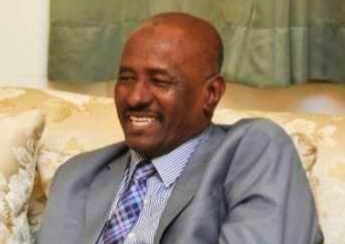Sudanese-Chinese Cooperation: Obstacles of the Present and Future Prospects (3 – 3)

By: Hatem Hassan Bakhit
13//
Another reason for China’s lukewarm attitude towards cooperation with Sudan stems from a 2018 agreement between Sudan and Russia. This agreement, in principle, was to build a railway line from Port Sudan to West Africa with two branches. The first would extend from Port Sudan to Chad, and from there to Cameroon, reaching the Atlantic Ocean. The second would extend from Nyala to both Central Africa and South Sudan. The initial phase of this project would cost $10 billion, which China saw as an infringement on its larger global project, the “Belt and Road Initiative.” This initiative connects Africa to Asia, Central, and Eastern Europe, reviving the ancient Silk Road. In Africa, the first phase of the project spans from Angola in the west to Djibouti on the east coast, covering 1,160 km, including railway lines, the linking of Zambia and Tanzania, the construction of dry ports, and the development of seaports and power plants at a total cost of $120 billion. China remained convinced, as it privately shared with Sudanese leadership at the time, that Russia’s goal was to connect West Africa to the south and east with a network of interlinked roads and railways, a plan that in some aspects runs counter to China’s infrastructure projects in Africa.
14//
Despite the fact that the third forum concluded with the signing of five agreements between Sudan and China, in the presence of the former president Al-Bashir, covering areas such as mining, electric power, railways, and the development of agriculture and irrigation techniques, none of these agreements were implemented. This was due to disagreements over the debt volume and its rescheduling. China is known to offer only minimal debt relief and does not waive service fees but instead opts to reschedule payments, even if this results in the indebted nation accruing more loans. When defaults occur, China often takes over the assets it financed, as happened in Sri Lanka. After drowning in Chinese debt, Sri Lanka handed over its main port, built with Chinese loans, to China for 99 years under undisclosed terms at the time of signing. Similar outcomes are expected in some highly indebted African nations.
15//
Between 1994 and 2018, a total of 100 projects were signed between Sudan and China, with some agreements being renewed multiple times. However, most projects stalled, not due to debt defaults but because of disputes over the total debt volume. China has shown a willingness to sign and re-sign the same agreements, hoping to recover its debts.
16//
Despite China’s announcement that it is on the path to economic recovery from the COVID-19 fallout, it reduced its financial aid and lending to African nations in 2021 and 2022 for known reasons. However, in early 2023, China resumed lending, granting a total of $4.61 billion to various African governments. Egypt and Nigeria received the lion’s share, each securing $1 billion to support their central banks. Sudan, on the other hand, received no part of these concessional loans.
17//
China has initiated preparations for the fourth China-Africa Forum, set to take place in late 2023. The Chinese National Foreign Exchange Authority issued an official statement outlining the debt owed by African governments as a prelude to the upcoming forum in September 2024. The statement includes the following:
– As of the end of 2023, African nations owed $45.2 billion in overdue debts to China.
– Nine countries, including Sudan (ranking seventh with over $6 billion in debt), have completely defaulted.
– Fifteen African nations are at severe risk of default.
– Fourteen countries are moderately in default.
Nevertheless, this statement did not deter China’s willingness to sign new agreements with African nations participating in the forum, aiming to implement new infrastructure projects.
18//
After attending the forum in September 2024, Sudanese leader Abdel Fattah al-Burhan returned from Beijing with the promising news of signing bilateral agreements in various fields, including infrastructure, mining, agriculture, and manufacturing, particularly in defense industries. While these are positive developments, given the country’s current circumstances, it is prudent not to overly rely on the implementation of these agreements, as China’s commitment to signing agreements does not always translate into swift execution, especially with countries in debt distress like Sudan.
19//
It is wise to approach Sudan’s potential agreements with China cautiously. China’s slow implementation of projects is well-known, particularly when the partner nation is struggling to pay its debts. Additionally, Sudan’s current state, embroiled in a destructive rebellion, makes it difficult to convince China or any other country to invest large sums in infrastructure projects that could be destroyed in the conflict.
20//
Finally, while China does not offer its loans out of charity, the most objective assessment of China’s actions would be that it is more in need of the raw materials found in Africa to sustain its growing population and economy. Sudan’s resources, however, are currently inaccessible due to the ongoing violence. Thus, the future of Sudanese-Chinese cooperation remains uncertain, entangled in debt disputes, and hindered by the country’s ongoing conflict.



